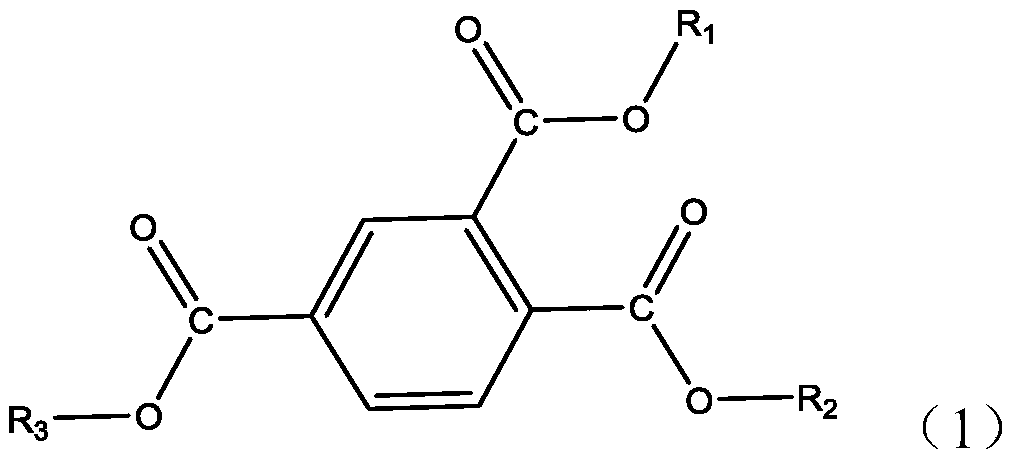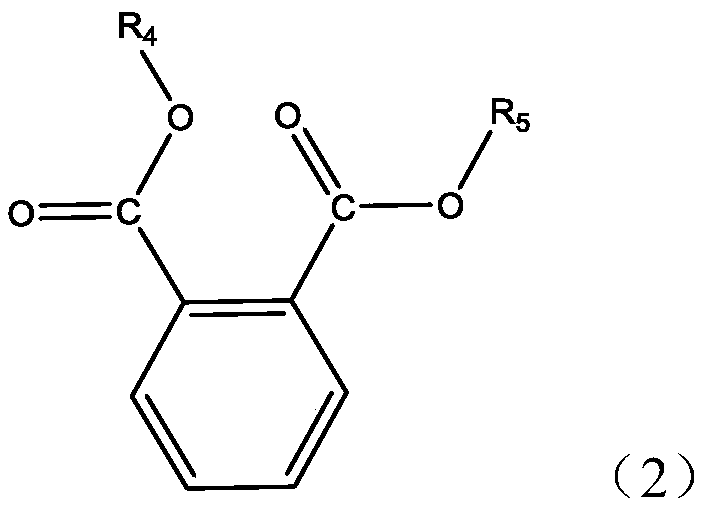Silicon-free oiling agent for carbon fiber precursor
A carbon fiber precursor, silicone-free technology, applied in the direction of fiber type, fiber treatment, fiber chemical characteristics, etc., can solve problems such as insufficient heat resistance, poor effect of preventing monofilament adhesion, and increased equipment cost
- Summary
- Abstract
- Description
- Claims
- Application Information
AI Technical Summary
Problems solved by technology
Method used
Image
Examples
Embodiment Construction
[0071] The present invention will be specifically introduced below in conjunction with specific embodiments.
[0072] Various evaluations and measurement methods in the present invention are as follows:
[0073] Residual rate of heat resistance: using a thermogravimetric analyzer (Netzsch, Germany, NETZSCH TG 209F3), in an air atmosphere, the temperature was raised to 400 °C at a heating rate of 10 °C / min, and the resistance at 300 °C was obtained from the obtained thermogravimetric curve. Thermal Survival Rate.
[0074] Emulsion particle size: measured using a laser particle size analyzer (Malvern, UK, Mastersizer 2000).
[0075] Carbon fiber ash content: according to the national standard GB / T 1429-2009 "Determination of Ash Content of Carbon Materials".
[0076] Roller sticking degree in the raw silk production process: continuous production for one month, count the number of times the roller surface is cleaned during the calculation period, and evaluate according to the ...
PUM
| Property | Measurement | Unit |
|---|---|---|
| The average particle size | aaaaa | aaaaa |
Abstract
Description
Claims
Application Information
 Login to View More
Login to View More - R&D
- Intellectual Property
- Life Sciences
- Materials
- Tech Scout
- Unparalleled Data Quality
- Higher Quality Content
- 60% Fewer Hallucinations
Browse by: Latest US Patents, China's latest patents, Technical Efficacy Thesaurus, Application Domain, Technology Topic, Popular Technical Reports.
© 2025 PatSnap. All rights reserved.Legal|Privacy policy|Modern Slavery Act Transparency Statement|Sitemap|About US| Contact US: help@patsnap.com



